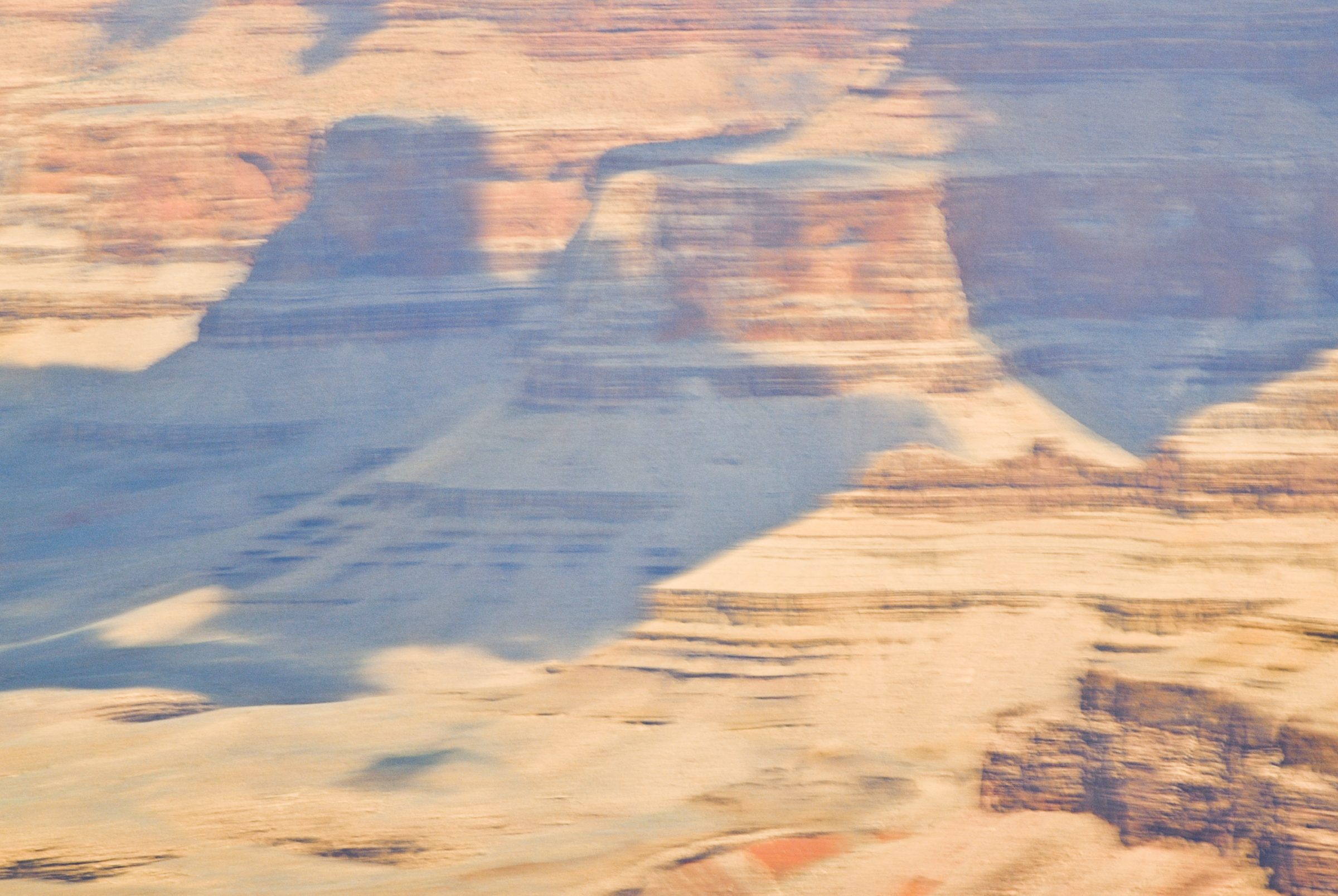by Michael Abatemarco for The New Mexican

Photography has the power to freeze the world, capturing the view of a landscape in perfect stillness. The viewer’s sense of active participation in the environment when looking at such a photograph is subdued: both the image and viewer are still. What photographer Gunnar Plake has achieved in The Light Within, his second series of Grand Canyon images, challenges the idea of landscape photography as a vehicle for evoking the nuances of the still image; instead it presents an equally nuanced world of fluid motion and, sometimes, dizzying speed. Plake has his own term for the kind of work he does: accelerated landscape photography.
His images may first strike the viewer as unusual due to their deliberate distortions and their blurred, unfocused appearance, but his distinctive process is in service to his understanding of the restless human eye. “It’s all about how I feel about seeing,” Plake said in an interview with Pasatiempo. “I’m trying to convey feeling. I grew up hyperactive way before they had a name for it–in looking back, that translated into never having enough time. It took me two or three times longer to get anything done. But also, I think, what’s going on with everybody today? There’s just too much data. How do we process that data? Being a visually oriented person, I got off on this tangent, which I describe as my desire to capture motion within a still life.”
Eight of Plake’s large-scale photographs mounted on anodized aluminum show at Chiaroscuro Contemporary Art in an exhibit that opens Friday, Sept. 17. Like The Space Between, an earlier series shown at Chiaroscuro in 2008, this work is part of the artist’s ongoing exploration of Western landscape imagery. Plake has done other photo series focusing on seascapes and forests, and all capture a textural quality in the way light reacts to the camera’s motion.
Plake is not sitting still when he shoots. Instead, he manipulates the camera in motions that result in images that accentuate colors and patterns rather than details. “In moving the camera, it enables me to bend the light,” he said. “It does change the quality of the color, intensifying the light in some cases; and, of course, what is photography but capturing the light? For me, the question has been, how much can you move the camera without totally losing the viewer? I’m constantly looking for the natural flow within a landscape. That is my grain. How much can I stroke the camera against the grain without totally losing representation?”
Plake’s distortions hover on the verge of abstraction but never leave the viewer stranded in uncertainty about what he or she is looking at. His photograph Colorado River Reflections is a good example. You know exactly what it depicts: a river snaking through the canyon as seen from a high vantage point. Yet the blurred image has vibrancy, a shimmering intensity that a straightforward shot would probably lack. Here the river, reflecting the light of the sun, is lit up like a white-hot flame. Chuar Butte, another image in the series, is recognizable as a photograph of canyon walls. One wall of the canyon is near, cast in shadow; another is distant and rests in the light. Common to both areas is a reddish band of color, a layer of rock laid down hundreds of millions of years ago. Distance becomes all but erased as almost tangible light fills the space. In Plake’s work, distance is characterized by color changes. Nowhere is this more true than in the images Golden Temple and Condors Soar; both images show off the golden glow of the canyon to majestic effect.
But the photographer’s process of revealing the subtleties of the light as it interacts with the landscape does not involve a simple up-and-down or side-to-side motion. “My camera stroke has become increasingly a complex curve, moving in more than one direction or one plane at a time — like putting a topspin on a tennis ball. It’s constant experimentation. When it really works, there’s a quality to the image that is just ethereal.”
The immediacy of Plake’s photographs puts the viewer in the space he shoots. Adding to that sense is the absence of glass or glossy finish that can cause glare and reflections. The pictures do not have frames, either. These things, in Plake’s view, just add another layer of distance between the observer and the observed.
The anodized aluminum on which the pictures are mounted is visible as a border of each photograph. Its matte surface contrasts with the photos themselves. “It refracts the light while the print reflects it,” Plake said. “That material or sculptural difference really appeals to me. My prints are printed glossy, and then they’re brought down to a semiluster laminate. The final beauty of this way of mounting is that you can see the print in any light level. As the light changes, the print changes, and the print relative to the aluminum also changes. Sometimes the print looks like a window in the aluminum, and sometimes it looks like a matte.”
Unlike his first series of Grand Canyon images, all of the photographs in The Light Within are without a visible sky. They focus instead on light reflecting off canyon walls. “I think my third series is probably going to be titled The Edge, which is the rim itself,” said Plake, who visits the canyon every few months for a week at a time. Most of his shoots are done at first or last light to avoid the intensity of the midday sun, which tends to wash out the landscape. Plake captures a brief, hallucinatory vision of the world from these magic times of day.